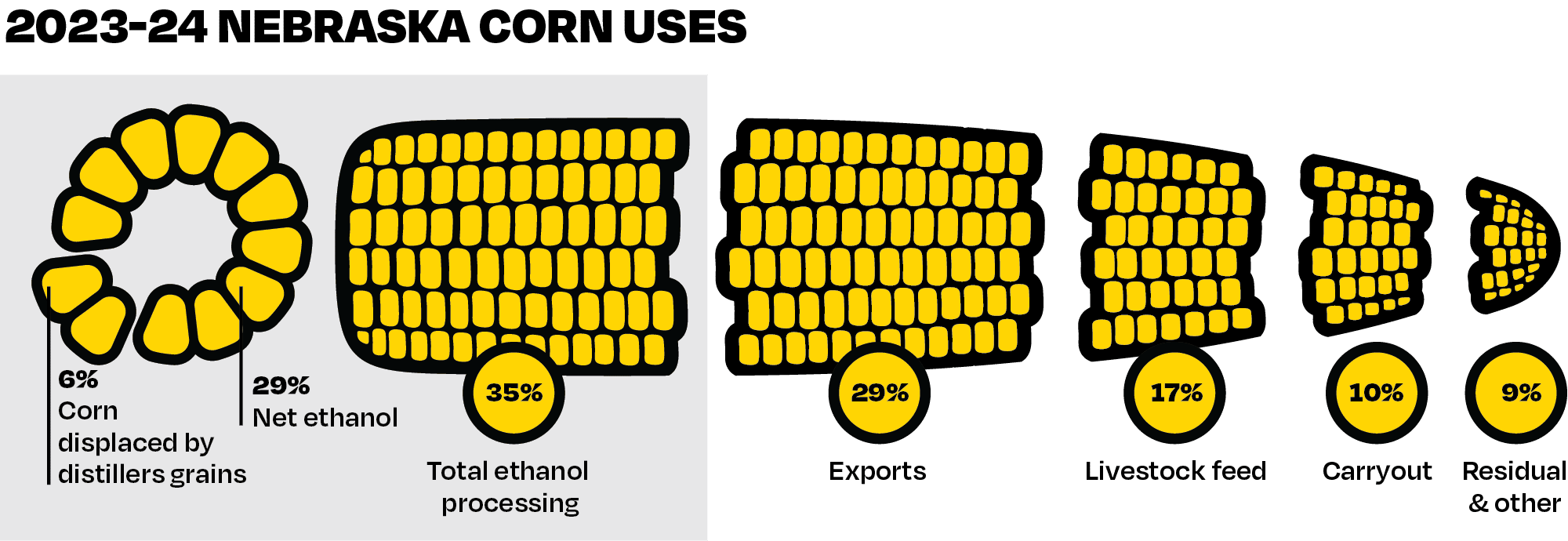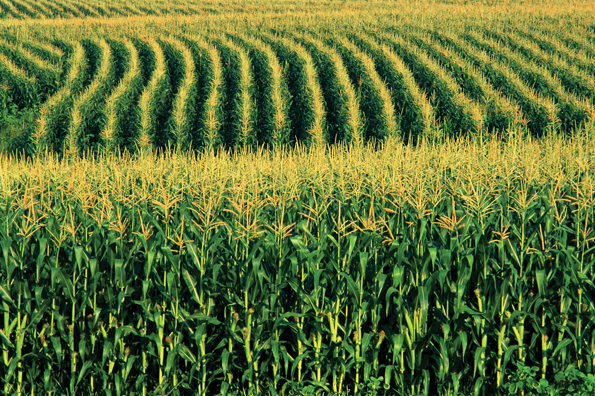Editor’s Note: “Flatwater Explains” is an occasional series during which FFP reporters explain the people, places, and things that make Nebraska what it is, while answering questions that both longtime residents and first-time visitors might have.
If you’re a Nebraskan who didn’t grow up on a farm, you may think that the corn grown in the state is the same corn you buy on the cob or that’s found in a can at your local supermarket.
Not really: Only a small portion of Nebraska’s corn ends up at the grocery store, and then often in an indirect way. So, if the destination for Nebraska corn isn’t the frozen aisle, it raises the question: What are all those endless cornfields for, anyway?
Farmers grow the crop more than any other in Nebraska, with nearly 10 million acres harvested in 2023. Nebraska is in fact the third-largest corn producing state in the U.S., trailing only Midwest neighbors Iowa and Illinois. Thousands of jobs here are built around corn: growing it, transporting it, processing it. So, where does it go?
Is all corn the same?
Only about 1% of Nebraska’s corn is grown primarily for human consumption – popcorn, sweet corn and white corn. The other 99% of that corn Nebraska grows is “field corn,” sometimes called “dent corn” or “cow corn.” It’s starchier than the corn humans eat, and as the name “cow corn” suggests, is traditionally used to feed cattle.
How much corn is used for ethanol?
Much of the field corn grown in Nebraska stays right here in the state as the foundation of what the Nebraska Corn Board calls the “golden triangle” – the intertwined industries of growing corn, producing ethanol and raising cattle.
Planted in the spring and harvested in the fall when dried out, field corn can then be sent to one of Nebraska’s dozens of ethanol plants, where the starch in the kernels is broken down into sugars, then fermented. This produces ethanol along with distiller grains – leftover corn proteins and fibers. Nebraska ethanol plants use more than 750 million bushels of corn each year, to produce 2-plus billion gallons of ethanol. According to the Nebraska Corn Board, local ethanol is in fact the primary destination for corn grown in Nebraska – claiming 35% of corn grown in the state in a recent year.

What about the corn not used for ethanol?
Field corn often goes directly to feed mills, where the corn is ground up and mixed with other ingredients to be used as animal feed. Field corn and distiller grains leftover from ethanol production can be used as nutritional, high-calorie supplements to cattle diets, especially during the finishing stage as cattle put on weight prior to slaughter. In 2023 and 2024, roughly 17% of Nebraska corn (not counting distiller grains) was used by in-state feed operations.
What other items are made with Nebraska corn?
What happens to the extra corn?
Why is corn important to Nebraska?
U.S. residents mostly interact with ethanol at the gas pump – it’s used as a renewable additive to gasoline to promote cleaner, more complete burning of the fuel. A larger market for Nebraska ethanol means a larger market for Nebraska corn, and pro-ethanol policies are regularly promoted by Nebraska elected officials and ag advocacy groups.


































